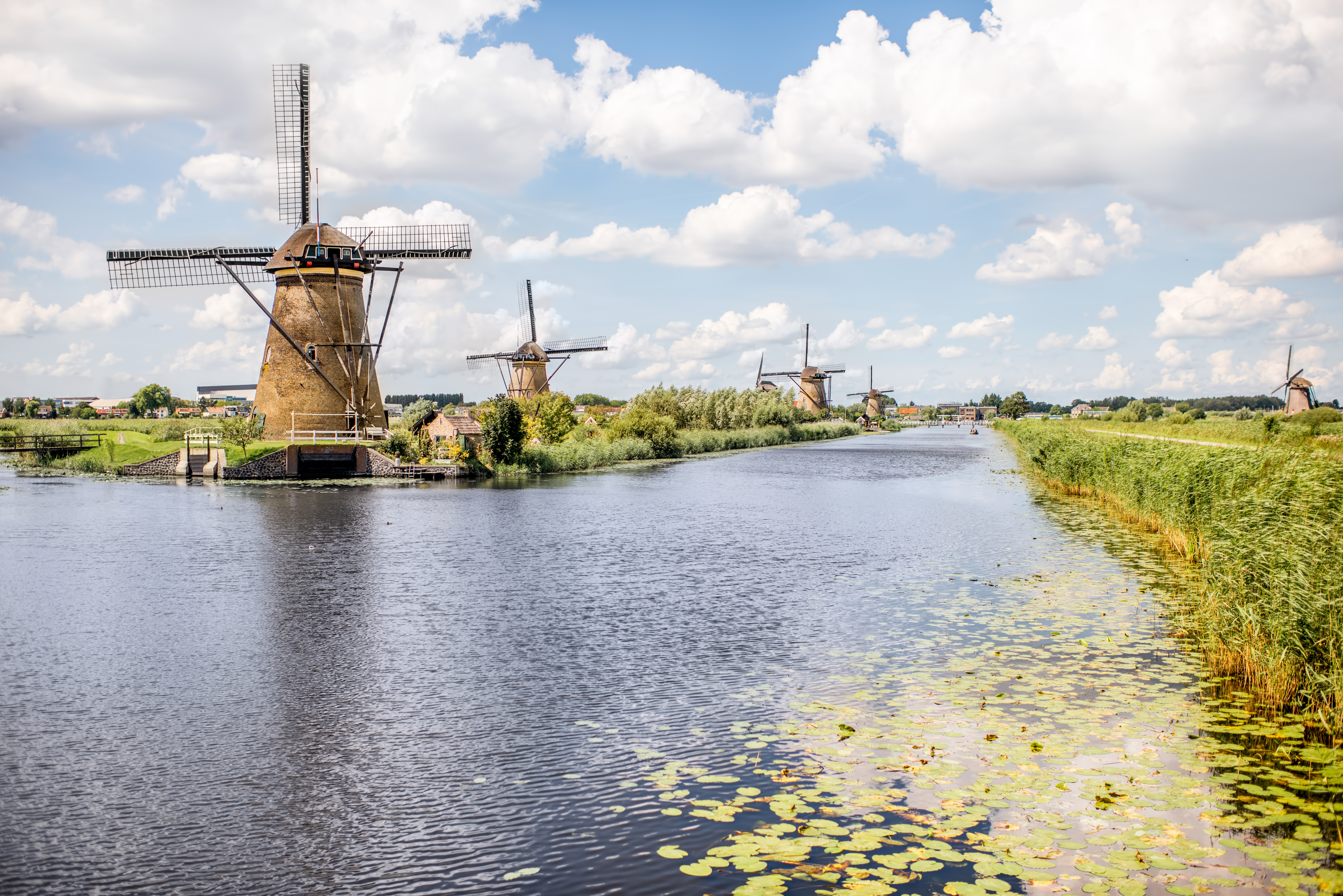Retirement Realities: How Social Security Benefits Compare Internationally
Social security, the bedrock of a nation's welfare, is more than just a government program; it's a profound reflection of a society's values and economic realities. As we look globally, the intricate tapestry of these systems reveals startling differences in how nations safeguard their citizens during retirement, disability, or unemployment. Forget generic definitions – the real story lies in the unique, often surprising, ways different countries structure their safety nets. This article unveils 14 fascinating truths about how social security benefits vary across major nations, offering a unique comparative lens. By diving into specific models, we gain crucial insights into the diverse approaches to ensuring dignity and security in later life, beyond what's obvious in our own backyard.
1. The Netherlands: A Two-Pillar Powerhouse

The Netherlands consistently boasts one of the world's most generous pension systems. Its strength lies in a robust two-pillar approach. The first is a universal basic state pension (AOW) funded by current workers' contributions, ensuring every resident receives a baseline income upon reaching retirement age. The second, and arguably more significant, pillar is a mandatory, collectively managed occupational pension scheme. Nearly all employees participate, building substantial, inflation-protected benefits. This combination provides exceptional financial security, reducing reliance on individual savings and highlighting a collective societal commitment to elder care.
2. Germany: Bismarck's Enduring Insurance Model

Germany's social security system, largely inspired by Otto von Bismarck's 19th-century model, is primarily contribution-based. Retirement benefits are directly linked to an individual's earnings and years of contribution to the statutory pension insurance (Deutsche Rentenversicherung). This means benefits are directly tied to work history, rather than being universal. Germany also offers comprehensive health insurance and unemployment benefits, emphasizing a strong social safety net funded by mandatory worker-employer contributions. It showcases a highly integrated system where past work directly dictates future security.
3. Sweden: A Flexible, Notional Defined Contribution System

Sweden's social security system is known for its "notional defined contribution" (NDC) scheme, a clever hybrid. While contributions are defined (like a 401k), individual accounts are "notional" – they exist on paper, not as actual funds. Benefits are calculated based on these notional accounts, but adjust to life expectancy and economic growth, offering flexibility and sustainability. Sweden also provides a universal basic pension, a guaranteed pension for low earners, and supplementary occupational pensions, prioritizing adaptability and broad coverage within a robust welfare state.
4. Japan: Facing an Aging Tsunami with Innovation

Japan's social security system faces immense pressure from its rapidly aging population. Its pension system combines a flat-rate basic pension for all residents with an earnings-related component for employees. The challenge lies in sustaining benefits with a shrinking workforce. Japan is innovating with increased automation in elder care, encouraging later retirement, and exploring new funding mechanisms. Its experience offers a stark look at the demographic challenges confronting many developed nations and the necessity of proactive, multi-faceted solutions.
5. United States: A Supplement, Not a Sole Source

The U.S. Social Security system primarily serves as a foundational "safety net" rather than a comprehensive retirement plan. Benefits are based on a worker's highest 35 years of earnings, with a progressive formula. However, they are generally intended to supplement, not replace, other retirement savings (like 401ks and IRAs). The U.S. model emphasizes individual responsibility for private savings, with Social Security providing a crucial, but often insufficient, income stream, highlighting a philosophical difference in governmental responsibility compared to many European nations.
6. Canada: Multi-Tiered Support for Seniors

Canada's social security for seniors is a multi-tiered system. The foundational layer is Old Age Security (OAS), a universal, residency-based pension for most Canadians over 65, independent of work history, though it's clawed back for high earners. Complementing this is the Canada Pension Plan (CPP), a mandatory, contributory scheme providing earnings-related benefits. Many also have private or occupational pensions. This blend aims for both universal coverage and earnings-based support, reflecting a balance between collective welfare and individual contribution within a robust social system.
7. Australia: Means-Tested Age Pension

Australia's approach to retirement income is unique, heavily relying on a means-tested Age Pension as its primary social security pillar. Unlike many countries with universal or purely contributory systems, the Australian Age Pension is assessed based on both income and assets, ensuring support is directed to those most in need. This encourages self-funded retirement through mandatory superannuation (employer-provided retirement savings), which is a privately managed, defined contribution scheme. Australia's model emphasizes self-reliance with a targeted government safety net.
8. Chile: The Privatization Pioneer

Chile implemented a radical social security reform in 1981, privatizing its pension system. Workers contribute to individual, privately managed accounts, making it a fully defined contribution scheme. While this model aims for financial sustainability and higher returns, it shifts investment risk entirely to the individual. Other countries have adopted elements of this model, but Chile's experience highlights the challenges of market volatility and ensuring adequate benefits for low-wage earners, offering a stark contrast to traditional state-run systems.
9. France: Retirement at a Slower Pace

France's social security system is often characterized by a strong emphasis on worker rights and a relatively early retirement age compared to many developed nations. Its pension system is complex, with numerous mandatory schemes for different professions. Benefits are typically generous, reflecting a strong social solidarity. While facing demographic pressures, France's model underscores a cultural commitment to leisure and dignified retirement, often leading to public resistance against reforms that would increase working years.
10. Singapore: The Central Provident Fund (CPF)

Singapore's social security system, the Central Provident Fund (CPF), is a unique, mandatory, comprehensive savings scheme. It requires contributions from both employees and employers, with funds allocated to different accounts for retirement, healthcare, and housing. Unlike traditional pensions, CPF is a personal savings fund, not a collective pot. Its multi-purpose nature reflects Singapore's emphasis on self-reliance and lifelong financial planning, offering flexibility but also placing more responsibility on individuals for managing their own long-term security.
11. United Kingdom: A Universal Basic State Pension with Means-Tested Top-Ups

The UK's social security system is rooted in a universal basic State Pension, providing a flat-rate benefit to all who meet contribution requirements. However, this is often supplemented by means-tested benefits (Pension Credit) for low-income retirees and increasingly, private or occupational pensions. The UK system is evolving, with significant reforms like auto-enrollment into workplace pensions aiming to boost private savings. It illustrates a system balancing universal provision with a growing emphasis on individual responsibility and supplementary retirement income.
12. Brazil: Social Rights and Funding Challenges

Brazil's social security system is enshrined as a social right in its constitution, providing broad coverage for retirement, disability, health, and unemployment. It's a complex, primarily pay-as-you-go system funded by contributions from workers, employers, and government. While theoretically comprehensive, the system faces significant funding challenges due to demographics and a large informal economy. Brazil's experience highlights the tension between ambitious social guarantees and the economic realities of a developing nation, often leading to ongoing reform efforts.
13. Italy: Generous Benefits, Demographic Pressures

Italy's pension system has historically been one of the most generous in Europe, offering high replacement rates and a strong link to final salaries. However, like Japan, it faces immense pressure from a rapidly aging population and low birth rates, leading to sustainability concerns. Reforms have aimed to increase the retirement age and shift towards a more contribution-based system. Italy's case study exemplifies the challenges faced by countries with mature welfare states and adverse demographics, struggling to balance social commitments with economic viability.
14. South Korea: Rapid Evolution in a Developing Welfare State

South Korea's social security system has undergone rapid development since the 1980s, evolving from a nascent program to a more comprehensive welfare state. Its National Pension Service (NPS) is a public contributory scheme, still relatively young compared to Western counterparts. South Korea's experience is valuable for understanding how rapidly industrializing nations establish social safety nets. It highlights challenges like a growing elderly population and a generational gap in benefits, as the system matures.
Retirement Redefined: Global Lessons for Your Golden Years

As we conclude our journey through 14 diverse national social security models, it's clear that the path to retirement security is mapped very differently across the globe. From the universal safety nets of the Netherlands and Canada to the market-driven individual accounts in Chile and Singapore, each system reflects a unique balance of collective responsibility, individual contribution, and economic reality. The challenges of aging populations are universal, yet the solutions – be it Sweden's flexible approach, Japan's technological innovation, or the UK's shifting emphasis on private savings – offer distinct lessons. Understanding these international retirement realities is not just an academic exercise; it's a vital compass, guiding us toward more resilient, equitable, and sustainable ways to ensure dignity and well-being for all in their golden years.